The 1947 Jefferson nickel without a mint mark was produced in Philadelphia with 95 million coins minted. Its value ranges from 10 cents to $75 depending on condition. Circulated coins are typically worth less than $1, while uncirculated examples in mint state can exceed $100 when professionally graded. Coins with rare errors like die cracks or letter variations command premium prices from collectors. The value significantly increases for high-grade specimens that have been authenticated by professional grading services, with pristine examples fetching substantially higher prices in the numismatic market.
That spare change rattling in your pocket could include a 1947 nickel worth far more than five cents. While most examples trade for face value, certain mint marks, pristine conditions, and dramatic errors transform these common Jefferson nickels into collectibles fetching $75 to over $800. Understanding what separates a pocket-worn specimen from a valuable treasure requires examining three distinct mint varieties and knowing which imperfections collectors chase.
Production Numbers Behind Each Mint Mark
The United States Mint struck Jefferson nickels at three facilities during 1947, creating distinguishable varieties through mint mark placement. Philadelphia produced 95,292,000 nickels without any mint mark—the highest quantity that year. Denver followed with 37,822,000 pieces bearing the “D” mint mark, while San Francisco contributed 24,720,000 coins stamped with “S.” These identifying letters appear on the reverse, to the right of Monticello’s architectural rendering.
The substantial Philadelphia mintage means no-mint-mark examples remain abundant in circulation today. Denver and San Francisco coins appear less frequently in pocket change, though none qualify as genuinely scarce. This production hierarchy directly impacts baseline values: common availability keeps circulated prices near face value across all three varieties, while uncirculated condition separates ordinary coins from those commanding premium prices.
Composition remained consistent across all 1947 nickels—75% copper and 25% nickel alloy measuring 21.2 millimeters in diameter. The wartime silver composition ended in 1945, so collectors searching for precious metal content will find none in these post-war strikes.
Current Market Values by Grade and Mint
Circulated 1947 nickels in typical worn condition trade for modest amounts regardless of origin. Philadelphia strikes range from 10 cents to 25 cents when showing heavy wear patterns. Denver examples fetch 15 cents to 30 cents in similar states, while San Francisco pieces command 20 cents to 35 cents—marginal premiums reflecting slightly lower mintages rather than genuine scarcity.
The value landscape transforms dramatically in uncirculated grades where original mint luster survives:
| Grade | Philadelphia (No Mark) | Denver (D) | San Francisco (S) |
|---|---|---|---|
| MS-60 | $2.50 | $3.25 | $4.50 |
| MS-63 | $8.50 | $12.00 | $18.00 |
| MS-65 | $28.00 | $45.00 | $75.00 |
| MS-66 | $85.00 | $165.00 | $285.00 |
| MS-67 | $425.00 | $850.00 | $1,200.00 |
These figures represent typical dealer prices as documented in 2024 Coin World pricing guides and recent Heritage Auctions results. The jump between MS-65 and MS-66 grades proves particularly steep—a single grading point can triple value. At MS-67 level, population reports show fewer than 50 certified examples exist for each mint mark, explaining the dramatic premiums.
A noteworthy Heritage Auctions sale in January 2023 saw a 1947-S graded MS-67+ Full Steps realize $2,280, demonstrating how exceptional preservation combined with complete architectural detail on Monticello’s staircase creates extraordinary value.
Identifying Full Steps Designation
Beyond standard numerical grades, 1947 nickels receive additional value recognition for “Full Steps” designation—a specialized attribute assessing strike quality. The reverse design shows Monticello with a front staircase containing five or six horizontal lines. Weak strikes blur these details into indistinct bands, while sharply struck examples display each step as a distinct, unbroken line.
Professional grading services assign “FS” or “Full Steps” notations when five or six steps show complete separation without interruption. This designation isn’t merely cosmetic—it reflects superior strike quality from fresh dies hitting properly centered planchets with adequate pressure. Only an estimated 5-8% of uncirculated 1947 nickels qualify for Full Steps recognition across all three mints.
The value differential proves substantial: a standard MS-65 Philadelphia nickel trades around $28, while the same grade with Full Steps designation reaches $120-$150. For Denver strikes, MS-65 jumps from $45 to $200 with complete steps. San Francisco coins show similar multipliers, with MS-65 FS examples commanding $275 versus $75 for regular strikes.
Collectors should examine the reverse under magnification focusing on the central staircase area. Genuinely full steps appear as parallel horizontal lines without breaks, weak spots, or fusion between adjacent lines. Partial steps reduce premium potential significantly—either all steps qualify or the designation doesn’t apply.
Documented Error Varieties Worth Pursuing
While 1947 nickels lack famous doubled dies or repunched mint marks commanding thousands, several error categories create collectible premiums worth recognizing. Die cracks rank among the most common imperfections, appearing as raised lines across the coin’s surface where cracked dies transferred metal into fissures. Minor cracks add $3-$8 to typical values, while dramatic examples crossing major design elements fetch $15-$35 depending on severity and location.
Off-center strikes occur when planchets feed improperly into the coining press, resulting in partial design transfer. A 1947 nickel struck 5-10% off center retains most design elements and trades for $45-$75. More dramatic misalignments of 20-30% command $125-$250, while extreme examples showing 50% off-center strikes can reach $400-$600. The key factor: date and mint mark must remain visible for attribution purposes, as anonymous errors lack market appeal.
Struck-through errors happen when foreign objects—grease, cloth fragments, or wire pieces—lodge between die and planchet during striking. These create interesting negative impressions or design blockage. Small grease-filled dies produce weak areas worth $8-$15, while struck-through wire or cloth fragments generate premiums of $45-$125 depending on size and clarity of the interference pattern.
Broadstrike errors result from missing collar dies during striking, allowing metal to spread beyond normal diameter. A 1947 nickel measuring 23-24 millimeters instead of standard 21.2 millimeters trades for $55-$95, with values increasing for greater expansion. These errors display flattened edges without the raised rim present on normal strikes.
One particularly desirable error involves lamination peels—surface metal separating from the core due to impurities in the alloy mixing process. Clean lamination strips creating dramatic visual effects command $75-$150, though prices vary widely based on aesthetic appeal and affected surface area.
Authentication and Grading Considerations
Determining precise values requires understanding the Professional Coin Grading Service and Numismatic Guaranty Company grading standards. These third-party services encapsulate coins in tamper-evident holders after expert authentication and numerical grade assignment from 1 to 70. The process costs $20-$40 per coin depending on service tier and turnaround speed.
For common-date 1947 nickels, professional grading makes economic sense only for specimens appearing MS-65 or better. A coin worth $28 in MS-65 loses money after $35 in grading fees and shipping costs. However, potential MS-66 or MS-67 examples justify the expense given value jumps to $85-$425+. The challenge lies in accurately pre-grading coins before submission—optimistic self-assessments frequently result in disappointing lower-grade returns.
Key diagnostic features separate gem uncirculated coins from nearly-perfect examples: contact marks on Jefferson’s cheek, hairline scratches across open fields, and luster disruption from handling or cleaning. Uncirculated coins should display unbroken cartwheel luster—the rotating mint-fresh sheen visible under proper lighting. Any wear on Jefferson’s cheekbone immediately disqualifies mint state status, dropping value to circulated ranges.
Cleaned coins suffer permanent value reduction regardless of original grade potential. Commercial dips, harsh rubbing, or polishing create microscopically visible surface disturbance that grading services note with “Cleaned” designations, reducing values by 30-60% compared to problem-free examples. Never clean coins with abrasives, jewelry solutions, or harsh chemicals—original toning always proves preferable to artificial brightness.
Building Your Collection Strategy
Collectors entering the Jefferson nickel series face decisions about scope and budget. A complete 1947 three-mint set in circulated condition costs under $1, representing an affordable starting point for beginners. Advancing to uncirculated MS-63 examples requires approximately $40 for all three varieties—still reasonable for most hobbyists.
Pursuing MS-65 specimens across the complete series demands greater investment, with the three 1947 varieties totaling around $150. This grade level represents the practical threshold where eye appeal, preservation quality, and value appreciation potential converge favorably. Coins grading MS-65 display minimal contact marks visible only under magnification, strong strikes, and attractive luster.
Specialist collectors targeting Full Steps designations face limited availability and higher costs. The 1947-S FS in MS-65 grade alone approaches $275, while securing all three mints in this combination exceeds $500. Population reports from PCGS show just 42 certified 1947-S MS-65 FS examples, compared to 386 regular MS-65 pieces—demonstrating the scarcity premium.
Error collectors should examine rolls and bags of unsorted nickels where undetected varieties still surface. While major dealers pick through most commercial inventory, smaller coin shops, estate sales, and bank-wrapped rolls occasionally yield overlooked off-center strikes or dramatic die cracks. The thrill of discovery adds enjoyment beyond mere acquisition of pre-certified examples.
Storage matters significantly for preservation. Uncirculated nickels belong in individual holders—either cardboard 2×2 flips with Mylar windows or hard plastic capsules. Never store valuable coins loose in bags or jars where contact with other pieces creates new scratches. Circulated examples suit album holes or tubes, though even worn specimens deserve protection from further degradation.
Where Premium Examples Surface Today
Online marketplaces including eBay show continuous 1947 nickel listings, though quality and pricing vary dramatically. Recent completed sales reveal MS-66 Philadelphia pieces realizing $75-$95, while raw (ungraded) coins claiming similar conditions often disappoint upon arrival. The absence of third-party certification creates risk—buying sight-unseen from photographs rarely matches in-hand inspection results.
Heritage Auctions and Stack’s Bowers conduct regular coin auctions featuring certified 1947 nickels across all grades. Their online archives provide reliable price guidance showing actual realized amounts rather than asking prices. A search of January-March 2024 results shows consistent patterns: MS-65 examples trade near guide prices, while MS-66 and higher grades vary by 20-40% based on eye appeal factors beyond numerical score.
Local coin shops offer tangible advantages for examination before purchase. Holding a potential MS-65 candidate under proper lighting reveals contact marks and luster quality impossible to assess from photographs. Dealers experienced with Jefferson nickels provide valuable education about Full Steps criteria and attribution of specific varieties. Building relationships with knowledgeable dealers creates access to fresh inventory before public listing.
Coin shows present opportunities for comparison shopping and competitive pricing. Seeing dozens of 1947 nickels side-by-side trains the eye faster than isolated purchases. Show dealers typically offer lower premiums than retail shops due to reduced overhead, though selection varies by show size and exhibitor specialization.
The key to successful collecting combines patience with education. Rushing into purchases without understanding grading standards or market values leads to overpayment for ordinary examples. Spending time with reference materials, examining certified examples in person, and tracking actual sale results builds the knowledge foundation for smart acquisitions that appreciate rather than disappoint.
Your journey with 1947 nickels might begin with pocket change examination tonight—that worn piece showing a “D” or “S” mint mark still holds modest premium over face value. Or perhaps a inherited collection contains uncirculated rolls waiting for proper evaluation. Either path offers engagement with American numismatic history from the post-war era when Jefferson nickels returned to traditional composition after their unique wartime silver interlude.
You may be interested:
- 1859 Indian Head Penny Coin Value Complete Errors List And No Mint Mark Worth Guide For Collectors
- 1911 V Nickel Coin Value Guide Complete Errors List And No Mint Mark Worth Today
- 1902 Dime Coin Value Complete Errors List With O S And No Mint Mark Worth Guide
- 1788 Quarter Coin Value Complete Guide Errors List And D S P Mint Mark Worth Revealed
- 1776 To 1976 Bicentennial Half Dollar Coin Value Complete Errors List And What Your D S And No Mint Mark Coins Are Actually Worth
- 1990 Penny Coin Value Errors List How D S And No Mint Mark Pennies Are Worth Thousands Of Dollars

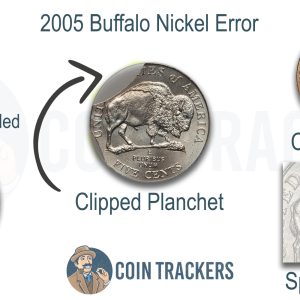
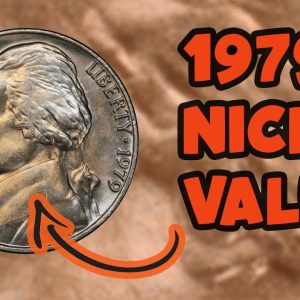
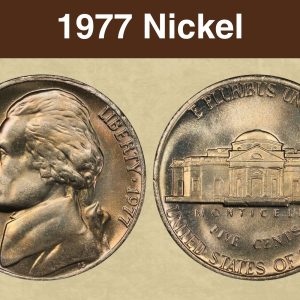
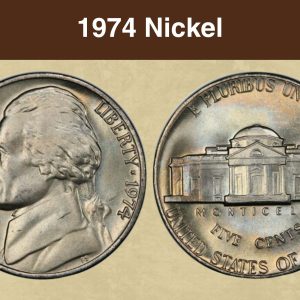
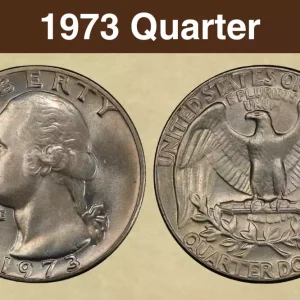
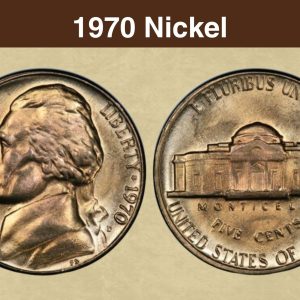
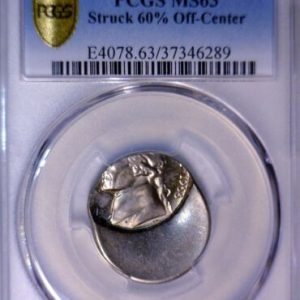
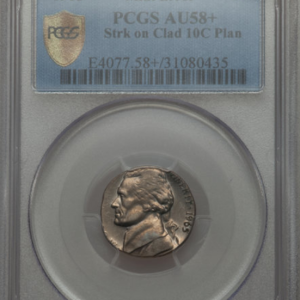
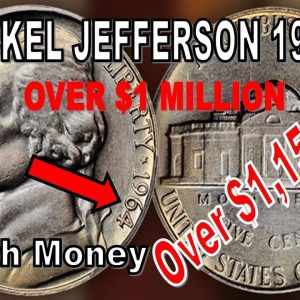
How much is a 1947 nickel worth today with no mint?
A 1947 nickel without a mint mark is a Philadelphia mint coin with a value ranging from about 10 cents to $75. The value depends on the coin’s condition, with less than $1 being typical for circulated examples, while higher prices are for coins in better condition or with rare errors. The 95 million 1947 Jefferson nickels produced in Philadelphia are the ones without a mint mark.
What are the errors on the 1947 nickel?
1947 nickel errors include planchet defects like cracks or holes, lamination errors, and die errors such as doubled die varieties or die cracks. Some 1947 no-mint-mark nickels are erroneously described as errors when they are actually standard Philadelphia mint coins, though some true 1947 error coins with no mint marks are very rare. A rarer variety is a doubled die reverse, which appears as extra steps on the Monticello or increased thickness in the lettering.
Where is the mint mark on a 1947 Jefferson Nickel?
On a 1947 nickel, look for the mint mark on the reverse (back) side of the coin, to the right of the Monticello image. A “D” indicates it was minted in Denver, while an “S” means it was minted in San Francisco. If there is no mint mark, the coin was minted in Philadelphia.
What nickel errors are worth money?
Valuable error nickels include the 1937-D 3-Legged Buffalo Nickel, 1926-S Buffalo Nickel, and errors like double dies, broad strikes, and off-center strikes on Jefferson nickels from 1983 and other years. Collectors also pay for 1971 “No S” Jefferson nickels and some 1981 S Type 2 proof nickels.